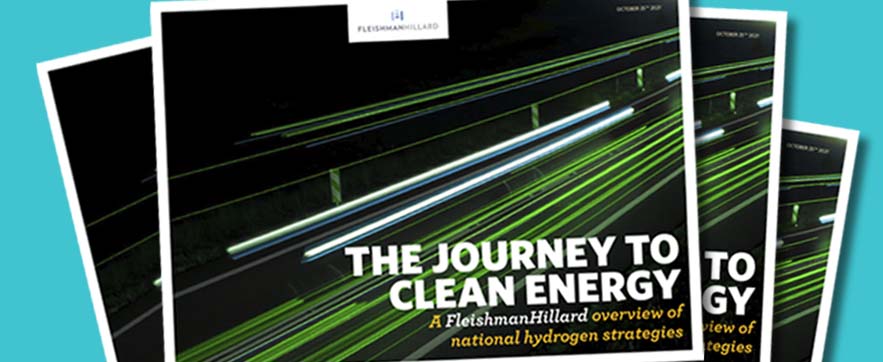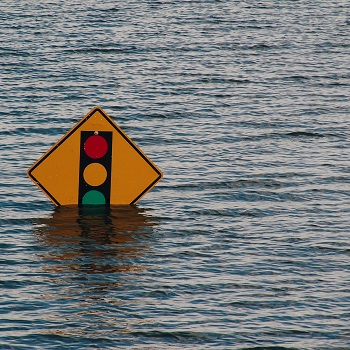Hydrogen: From the Headlines to Reality

Whether you are a climate enthusiast or have just been following the European energy news in the morning paper, chances are that you have heard of hydrogen. While it is not a new phenomenon and has long been deployed across a variety of sectors, lately hydrogen has become the new “it” gas of the energy transition. Notably, stakeholders ranging from policymakers to industry representatives to academics, are wondering whether this could really be one the key solutions to reaching the EU’s 55% emission reduction by 2030 and climate neutrality by 2050.
Despite its numerous applications in the energy and transport sectors, hydrogen is not an energy source in itself, but an energy carrier. This means that it must be extracted from other sources. There are different types of hydrogen due to the differences in the energy source and the extraction process used. They are each associated with a different colour, making up a whole hydrogen rainbow. However, not every way of making hydrogen is equally suitable to achieve decarbonisation. Within the context of EU hydrogen production, grey, blue, and green hydrogen play the most important roles.
96% of all the hydrogen produced in Europe is grey hydrogen. While the number sounds impressive, the source itself is less so, as grey hydrogen is produced from fossil fuels like natural gas via a process called steam reforming. As a result, grey hydrogen comes with high CO2 emissions levels as its by-product, which defeats the purpose of using it as a decarbonisation tool. However, these emissions can be captured and either recycled for further usage or stored underground; this is called carbon capture utilisation and storage. If the CO2 is captured in the process, the type of hydrogen produced is referred to as blue hydrogen. Given its affordability and decarbonisation potential, many consider blue hydrogen the most economically viable type, at least in the short and medium term. Yet, it also has some challenges, the main of which is that blue hydrogen production can result in a natural gas lock-in, which, too, could undermine the trajectory of the EU’s energy transition. Finally, hydrogen produced from water using electricity from renewable energy sources is referred to as green or renewable hydrogen. While very costly, it is largely believed to be the cleanest type of hydrogen and many advocate for it to be the EU’s focus. Despite less than 2% of all hydrogen produced in Europe being green to date, the European Commission has identified its upscaling within this decade as a priority, with the support of blue – “low-carbon” – hydrogen as a transitional solution.
Europe’s bet on hydrogen: “large scale deployment” by 2030
One of the reasons hydrogen is gaining popularity is due to its versatility. Indeed, its decarbonisation potential in hard-to-abate sectors is considered critical for attaining climate neutrality. Notably, the utilisation of hydrogen can result in significant emission reductions in the cement, chemicals, and steel industries. The recent breakthrough with the Swedish steelmaker SSAB producing the first fossil fuel-free batch of steel in the world by using renewable hydrogen showcases what a treasure trove it is for decreasing the industrial carbon footprint. Producing hydrogen-based fuels can also play a critical role for the decarbonisation of the maritime and aviation sectors. Another strategic utilisation of hydrogen would be in energy storage, both short-term – to increase grid flexibility – and long-term – to strengthen the infrastructure resilience in cases of extreme weather, cyber-attacks, and cross-border disconnections. Long-term storage has been identified as the EU’s priority in the Commission’s energy prices “toolbox” published on the 13th of October.
While all that makes hydrogen the perfect decarbonisation solution on paper, it is important to note that the technology itself is still maturing. To facilitate the increase in the use of hydrogen across the Union, the Commission has set the following targets in its 2020 Hydrogen strategy for a climate neutral Europe:
- 2020-2024: 6 GW of electrolysis capacity and 1 million tons of renewable hydrogen
- 2025-2030: at least 40 GW of electrolysis capacity and up to 10 million tons of renewable hydrogen
- 2030: large scale deployment across all hard-to-abate sectors
It is also preparing a revision of gas legislation to facilitate the market entry of hydrogen and remove regulatory barriers. The revision, titled the “Hydrogen and decarbonised gas market package” is expected on the 14th of December, 2021.
The journey to clean energy: A FleishmanHillard overview of national hydrogen strategies
Realising these ambitious goals will require significant funding. On the Union level, the Commission has already classified hydrogen projects as an investment priority under the Next Generation EU recovery program. However, governments’ support will be critical to finance large-scale production and generate national and cross-border market demand. Importantly, the success of upscaling hydrogen deployment at Member States level will largely depend on the availability of a well-developed framework. While some EU countries already had hydrogen strategies before 2020, the publication of the EU Hydrogen Strategy provided an extra boost. Since then, over half of the European countries have published their strategies or commenced their development. From them it is apparent that Member States are placing their bets differently depending on national factors, such as the energy mix and decarbonisation priorities. Accordingly, while some countries – such as the Netherlands, Germany and Spain – are setting ambitious targets for green hydrogen in line with the EU’s plans, others – like France, Hungary and the United Kingdom – aim for the blue and green scenario. This divergence already at such an early stage highlights the importance of keeping track of hydrogen-related developments occurring on a national level.
This is why FleishmanHillard EU has prepared a report that will become a reference point for all the latest updates on the status of national strategies for hydrogen in Europe. The report provides an overview of the contents of existing national strategies, as well as the status of hydrogen deployment in European countries and the availability of hydrogen-specific national legislation. Our Energy & Transport team will update the report every three months to keep you informed about the most recent developments on the hydrogen scene.
Thank you for expressing your interest in our report: “The Journey to Clean Energy: A FleishmanHillard Overview of National Hydrogen Strategies”. To access the full report, please enter your contact details below. You will receive the report directly in your inbox. We will handle your contact details in accordance with our privacy policy, which you can find here.
-

Ana has been part of FleishmanHillard’s Energy team since July 2021. She consults clients on energy and climate policy, with a special focus on energy networks, carbon sequestration and hydrogen. Ana holds an LL.M in Energy and Climate Law (cum laude) and an LL.B in...
Find Out More
-
Why Europe needs a water resilience strategy
February 8, 2024
-
Why the EU can’t risk failure at COP27
November 4, 2022


